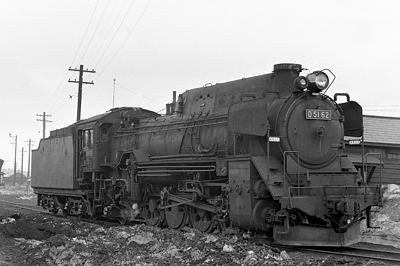
D51 No. 62
At Rumoi dept during Mar.1970.
Japanese
|
1935 - 1975 A middle to large Tender-Engine for main and sub-main line freight trains. |

D51 No. 62 At Rumoi dept during Mar.1970. |
|
It may be said that the D51 was the first completed Japanese modern steam locomotive class. If one were to ask, " What is the most popular steam locomotive in Japan ? " ... the answer would be the D51. D51 has a nickname " Degoichi ". In English, of course D is pronounced D and "go" is five and "ichi" is one. It's not only rail-fans but regular Japanese also, that have a knowledge of this nickname. D50's manufacturing ceased during 1931 due to an economic downturn. Afterward, there was no new freight model design for awhile. During 1936, there was an increased need for a new freight model, as increased freight meeds were dictated because of the wartime structure. D51 was planned with this background in mind, so, D51 had almost the same specifications as the class D50. D51's performance was matched for Japan's main and sub-main line tracks, and was very appreciated all over Japan. Therefore, a total of 1,115 (*) No.1 - 954 and No.1001 - 1161 were built. It was the largest single class locomotive manufactured in Japan. (* JGR - 1115, Taiwan R. - 37, Exported Soviet Union - 30, Total - 1,182) (Korea, standard gauge type - 2.) The D51 was largely produced and accordingly had some variation.
After its inception, the D51 went into main line freight train service, and worked with D50s. And that service area was extended to almost all Japanese railways, except for electrification and poor grade local lines.
During 1941-1943, Iburi Jyukan Railway Co. ordered five D51s as Iburi Railway No.D5101-D5105. During July 1944 Iburi Jyukan Railway Co. was nationalized and they were transferred with the ensuing JGR D51's No. 950 - 954. During 1944, five D51s were ordered from Taiwan Railway as a Taiwan Railway's Class D51 No.28 - 32, but they couldn't be transferred to Taiwan as the war became worse . Therefore, they were renumbered with the ensuing JGR D51's No. 1162 - 1166, and were used in JGR. Later they were transferred to Taiwan after the war end during 1946. After WW2, thirty-three engines were reconstructed to passenger models C61 from their surplus condition. As with previous D50 to D60's, six engines were altered with a relieved axle load (2-8-2 to 2-8-4), for the purpose of testing and using on more light grade lines. They were named D61. D51's continued to be active during the post-war period except on Shikoku Island. Yet, 1,042 engines were still active even during 1965, except for those that were remodeled and sent out from the Japanese mainland and those that were discarded due to accidents etc. Surplus full culling began from 1966. There were 1,042 of D51s during 1965, 5 years later, during 1970, the number was decreased to 756, and was decreased to 342 during 1973, and decreased by 78 during early 1975. However, six D51s survived until the end of steam trains during December 1975. They were Oiwake depot's No. 241, 397, 465, 603, 916 and 1086. More details are mentioned on this website "The Last days of Japanese Steam Engines Part 3" pages ...... The restored D51_498 remains active on JR East during spring, summer and fall. |
| Primary ran line in last 10 years |
Many
| Last line/depot and year |
Muroran, Yubari line / Iwamizawa
and Oiwake depot 1975
| Restored engine (2017) |
2 (No.200, 498)
| Preserved engine (2017) |
176 (Japan)
| |
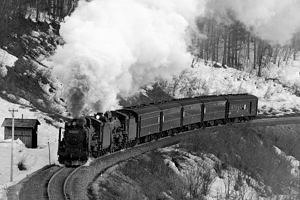
|
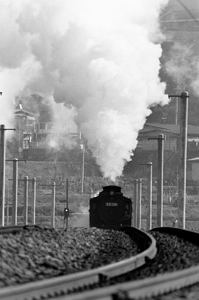
| ||||||||||||||||||||
|
Double-Headed D51 No.425 and D51 at Kanehana, Jyomon line Dec.1971. |
We can almost hear the steam as D51 No.348 climbs a slope on Chuo line at Agematsu during Dec.1971.
| 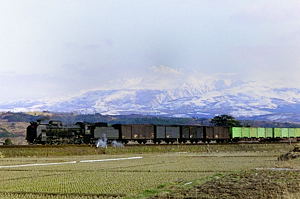
| 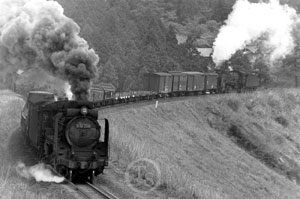
Snow still remains on Mt.Chokai | during late spring as D51 runs with the wind in the foreground. Kisakata in Uetu line Mar 1970.
D51_759 banked D51_1185. | At Nakazaike Kansai line May 1971.
| 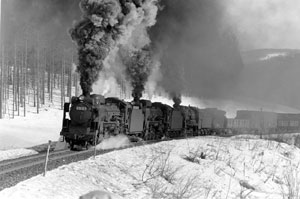
| 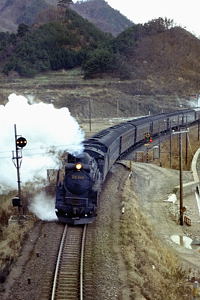
Surmounting Sekihoku mountain pass, | triple headed, D51157 + D51897 + 49626. Jyomon, Sekihoku line Mar 1971.
D51_648 at Imagawa on the Uetu line. Dec 1969
|
| 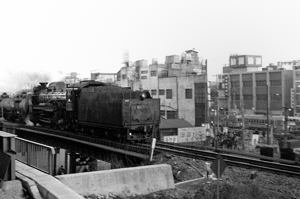
| 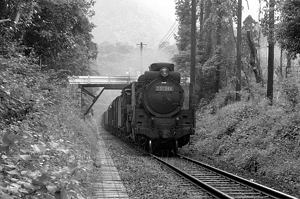
D51_770 over the main street of Tokyo | downtown's Kameido on the Sobu line. The Sobu line was the last line to run steam in the City of Tokyo. Kameido, Sobu line Jan 1969.
D51_944 at Saga, Sanin line. May 1968.
|
| 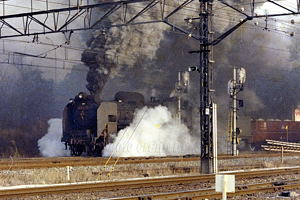
| 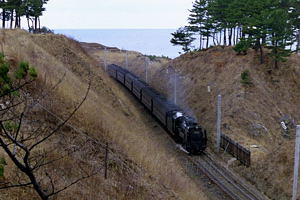
| D51 left Haijima station on the Hachiko line, near Tokyo. Feb 1969.
| At Kosagawa, Uetu line Mar 1972.
| 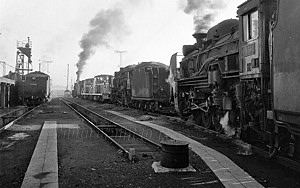
| 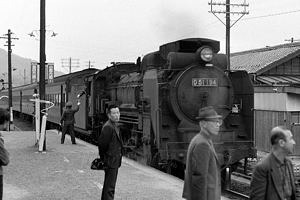
| D51_791 etc's D51s at Yokohama depot during 1968.
D51_194 at Mitani, Yamaguchi line during May 1971. | Yamaguchi line has a restored steam train service from Aug 1979. |
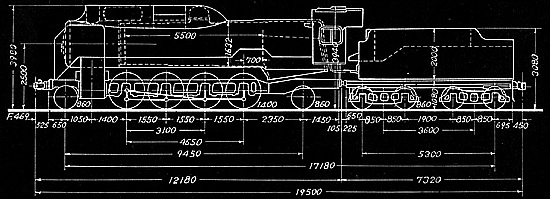
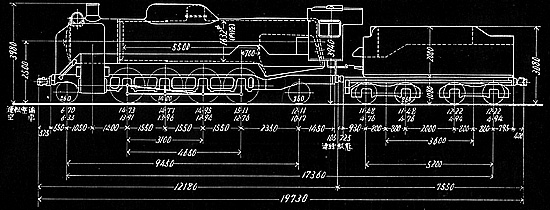
| Configuration | 2-8-2 | Dimensions Length (mm) | 19730 |
| Engine Weight (Operating tons) | 78.4 | Driver size (mm diameter) | 1400 |
| Boiler pressure (Kg/cm2) | 15.0 | Max Tractive effort (tons) | 14.9 |
| Driver Max Power (PS) | 1280 | Max Speed (km/h) | 85 |
| Manufactured years | 1935-1945 | Total production | 1115 |
| Remodeling 1 | 7 -> Class 2-8-4 D61 1959-1960 | Remodeling 2 | 33 -> Class 4-6-4 C61 1947-1949 |
| Number of moved out to other countries in WW2. | 5 (No.621,632-635) | Gauge | 3ft 6in (1067mm) |
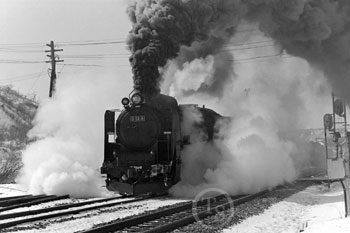
|
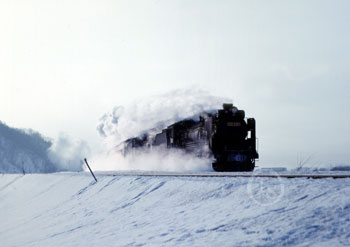
|
| Class D51 No.4 leaves Tomiura. | Class D51 double-headed No.597 + No.219 Kuriyama - kurioka |
Introduction |
Go to Top |